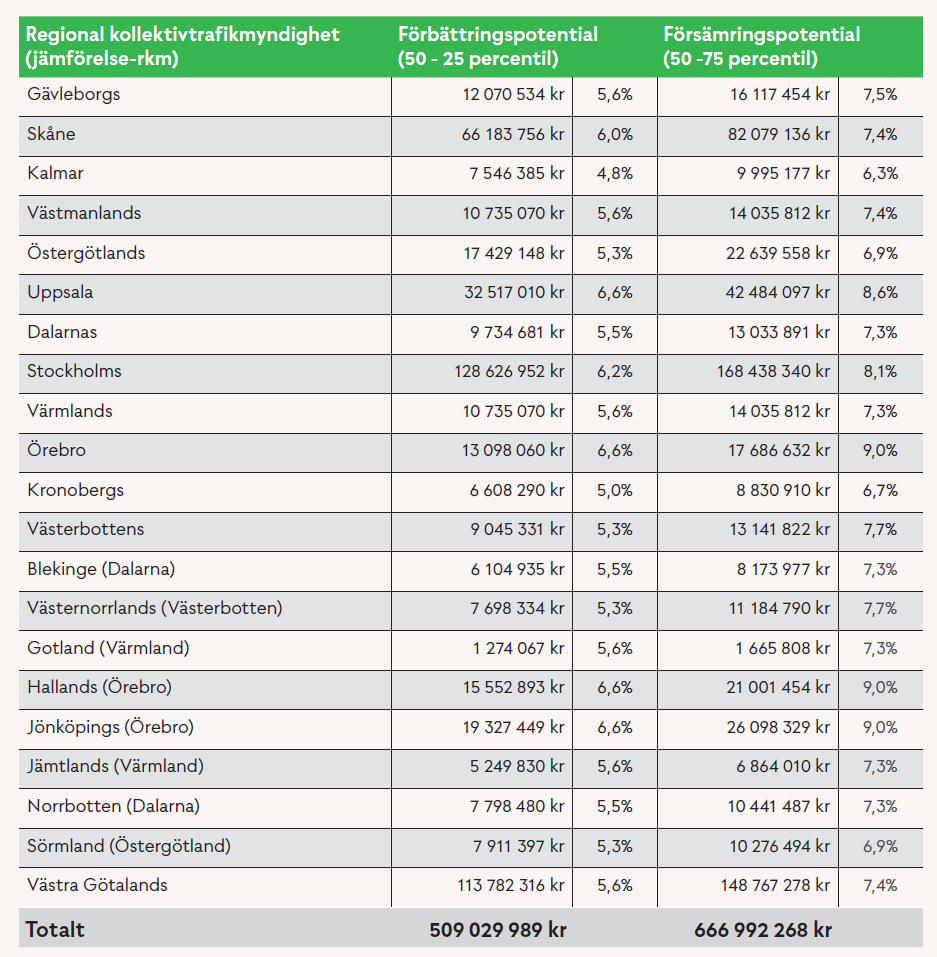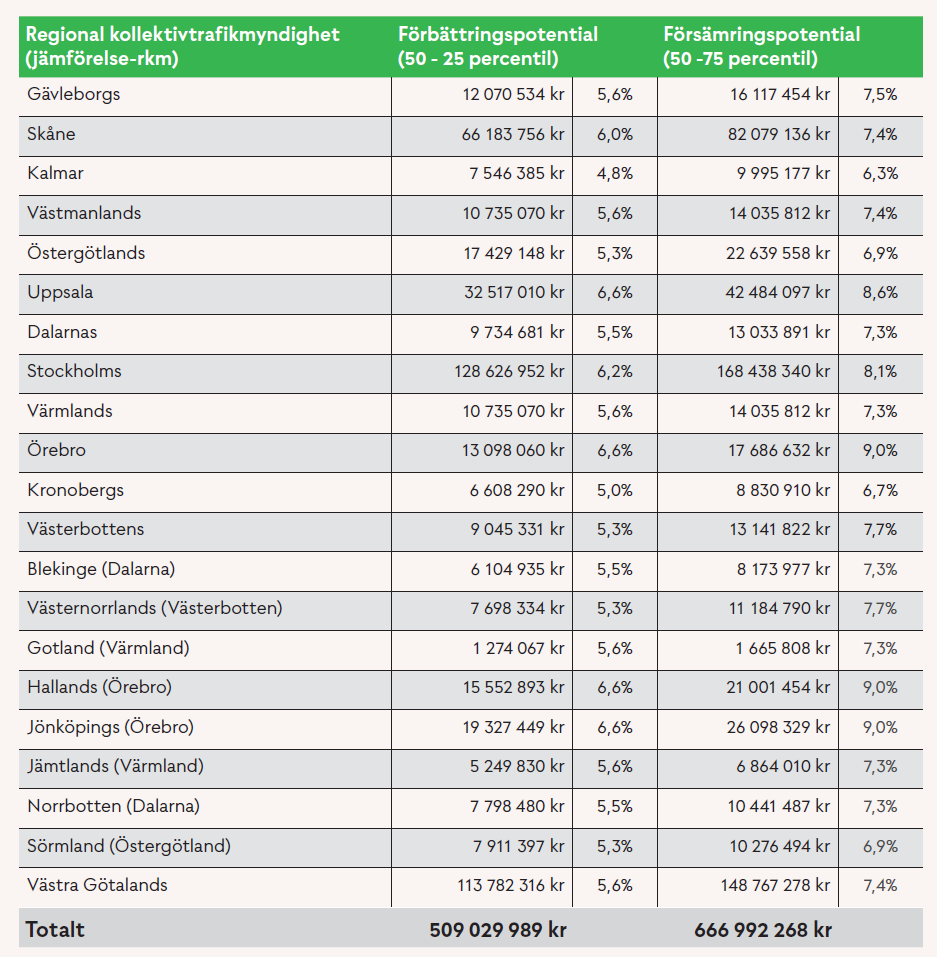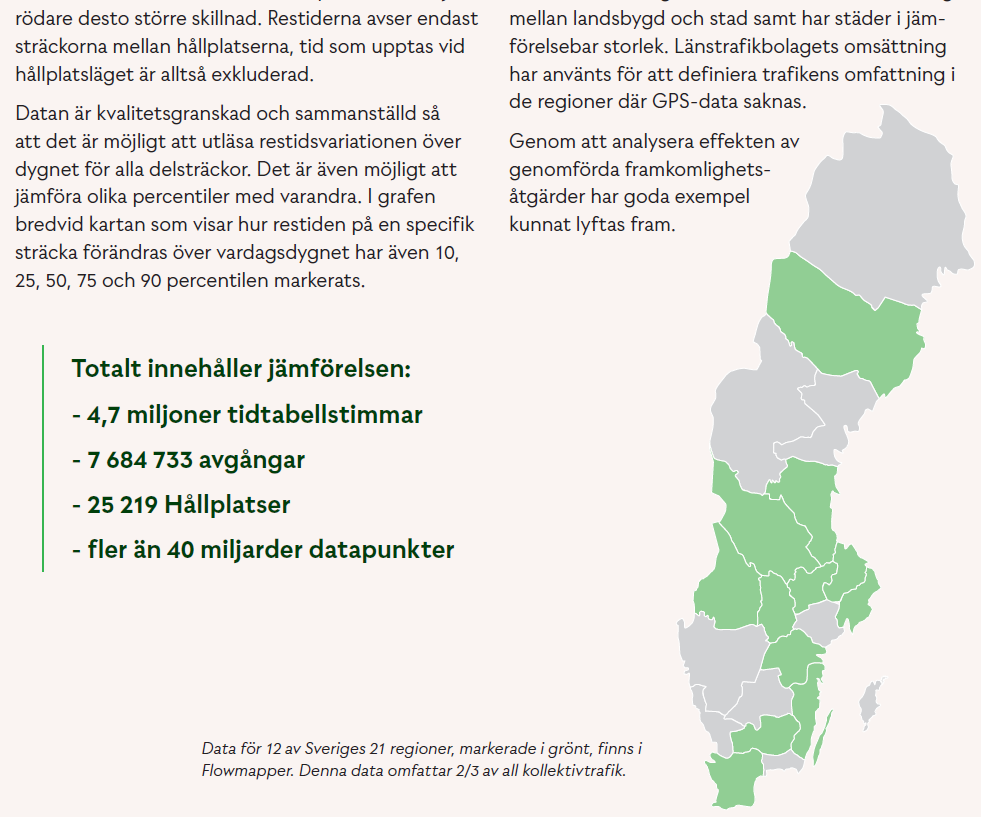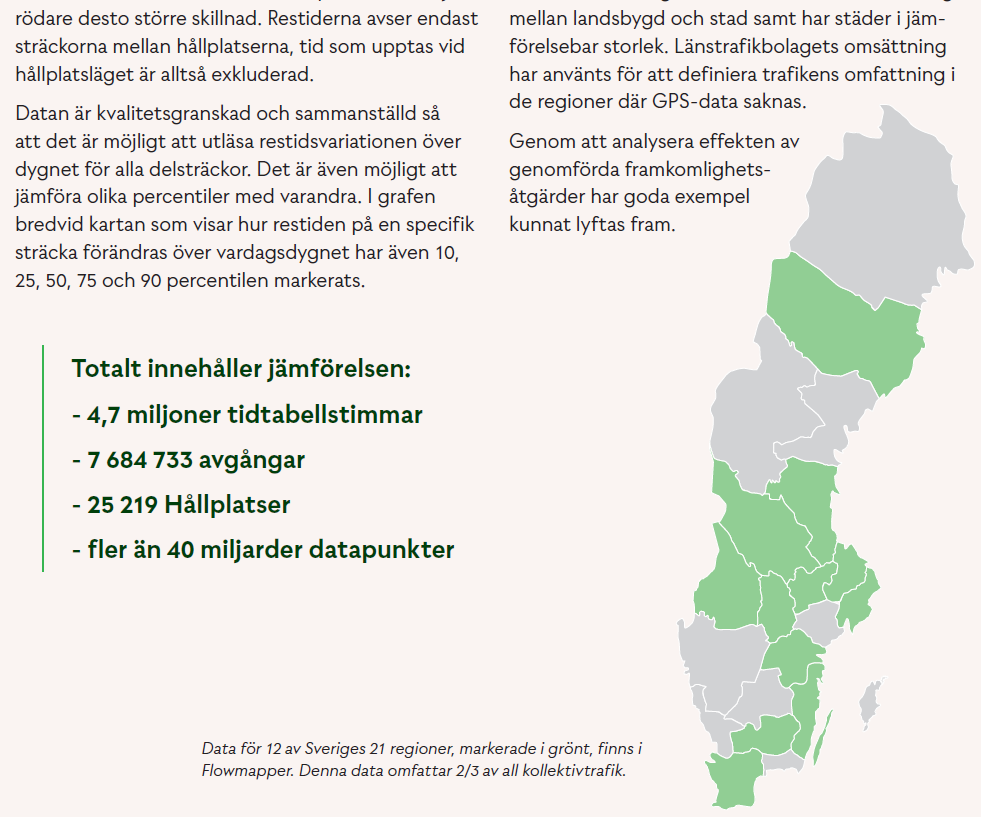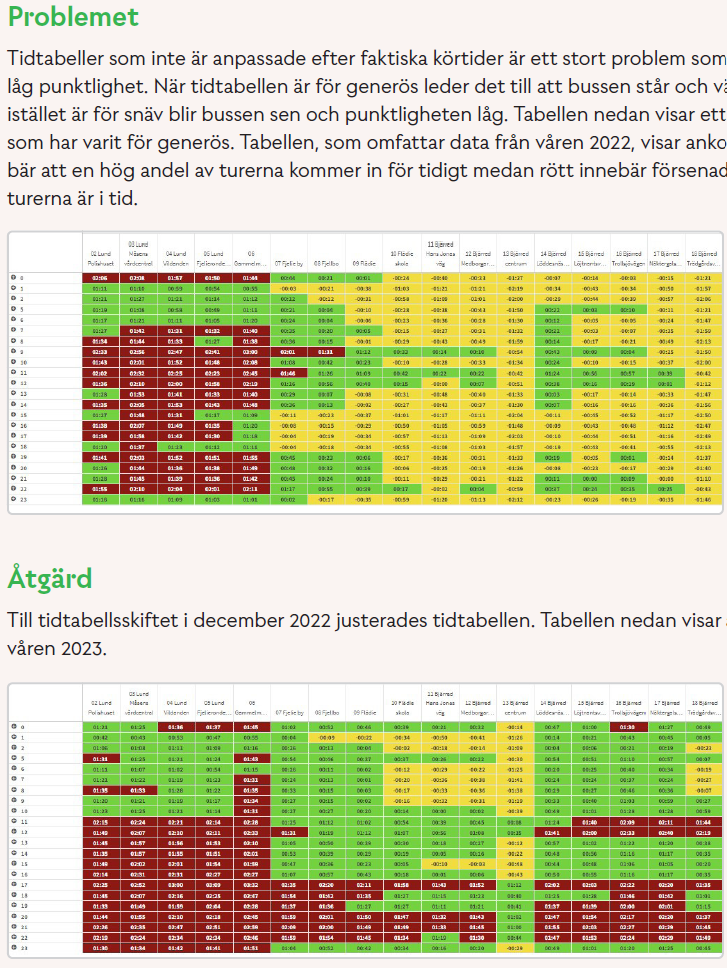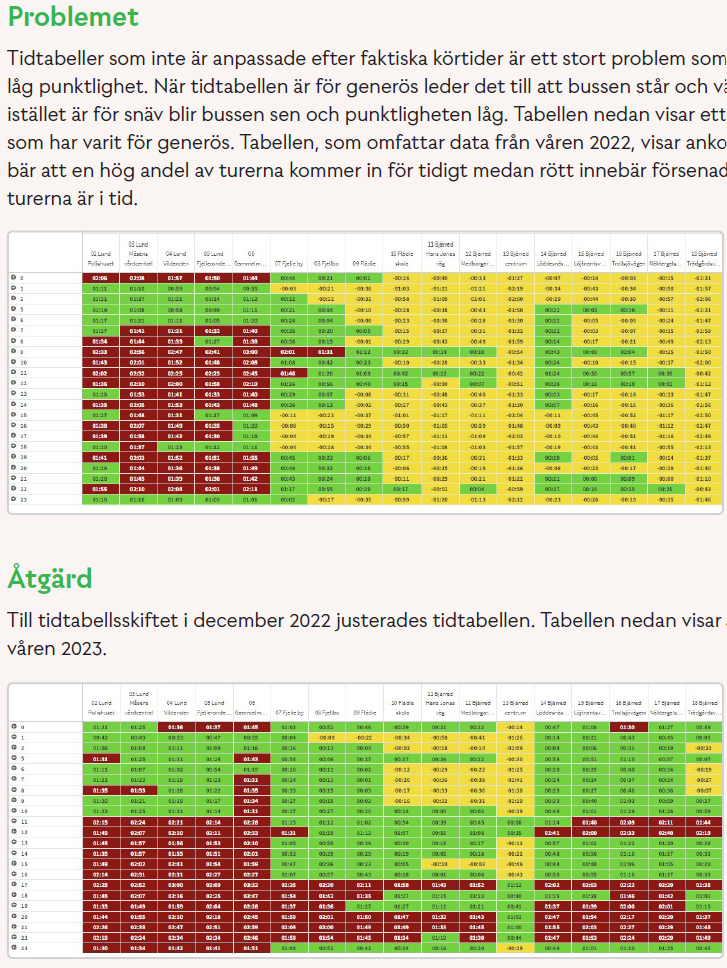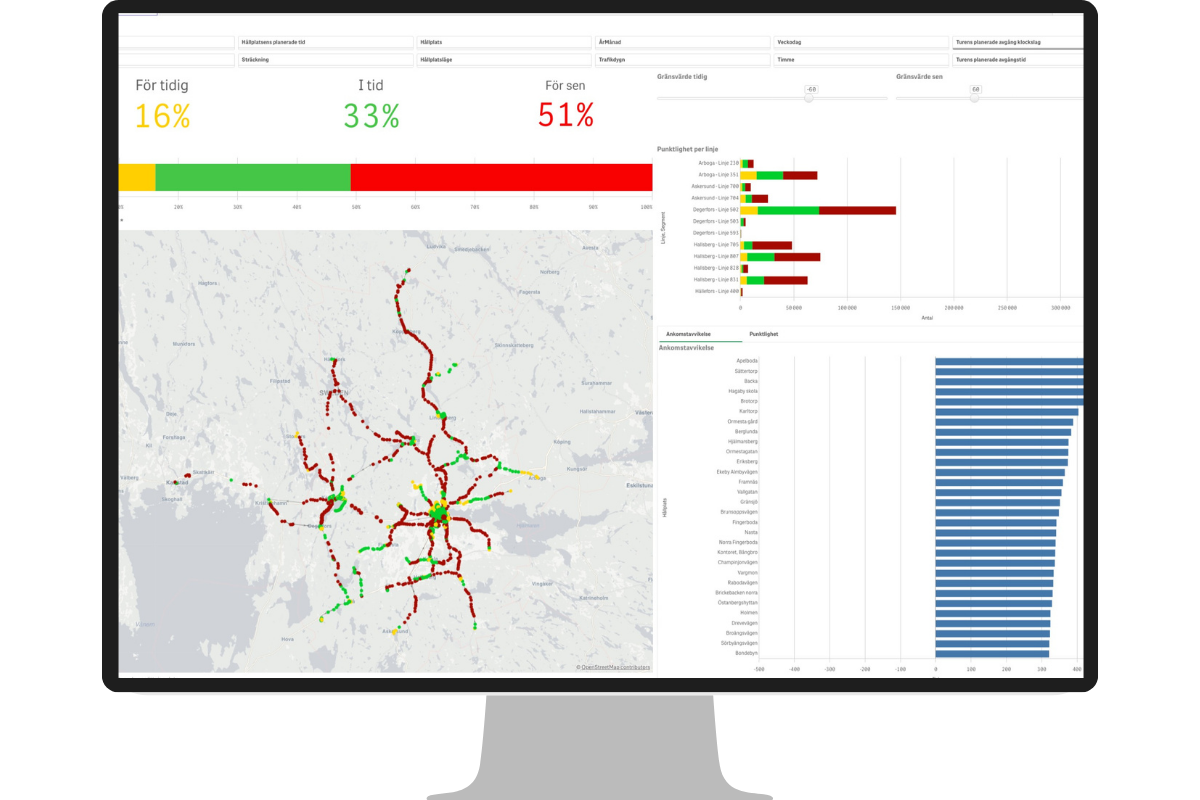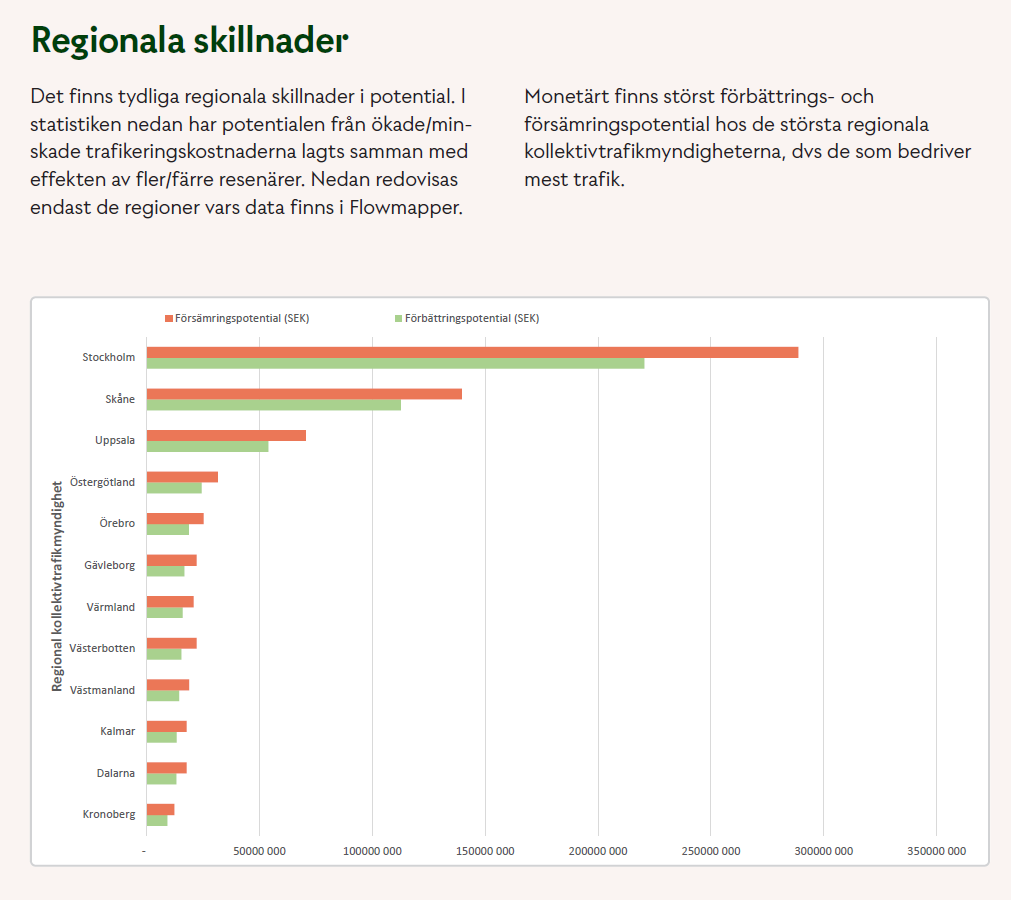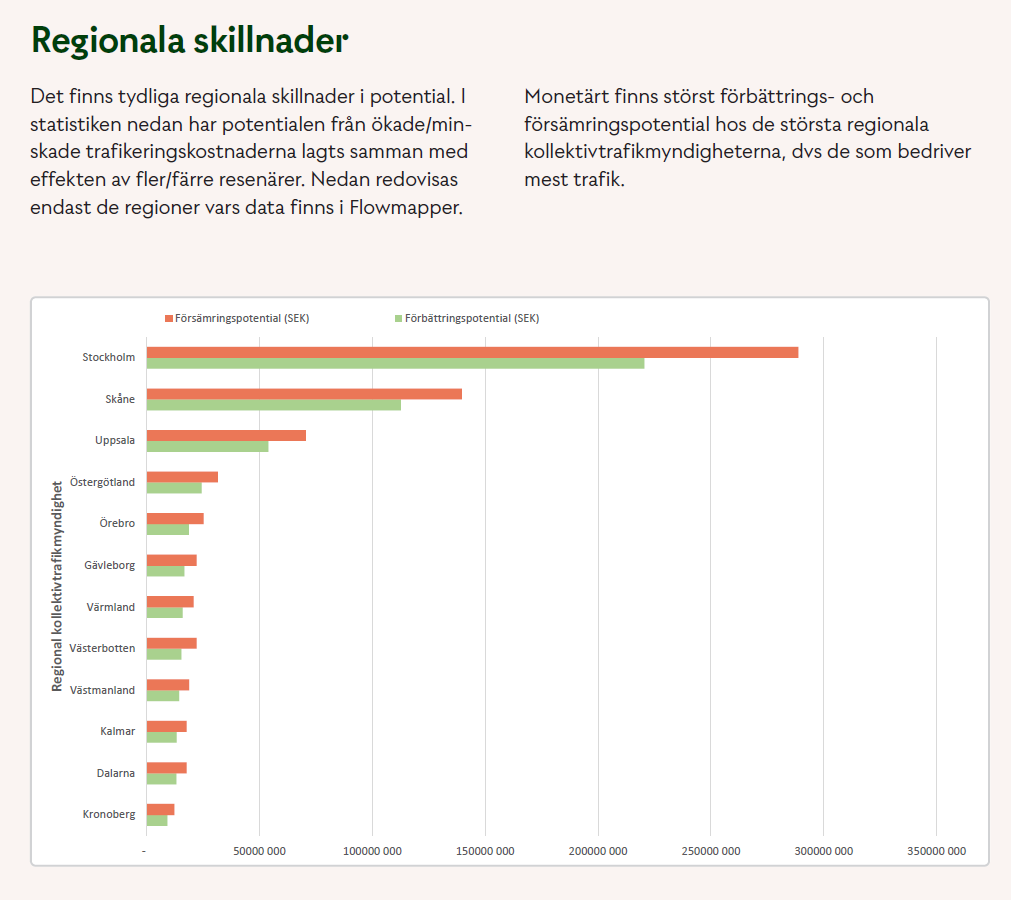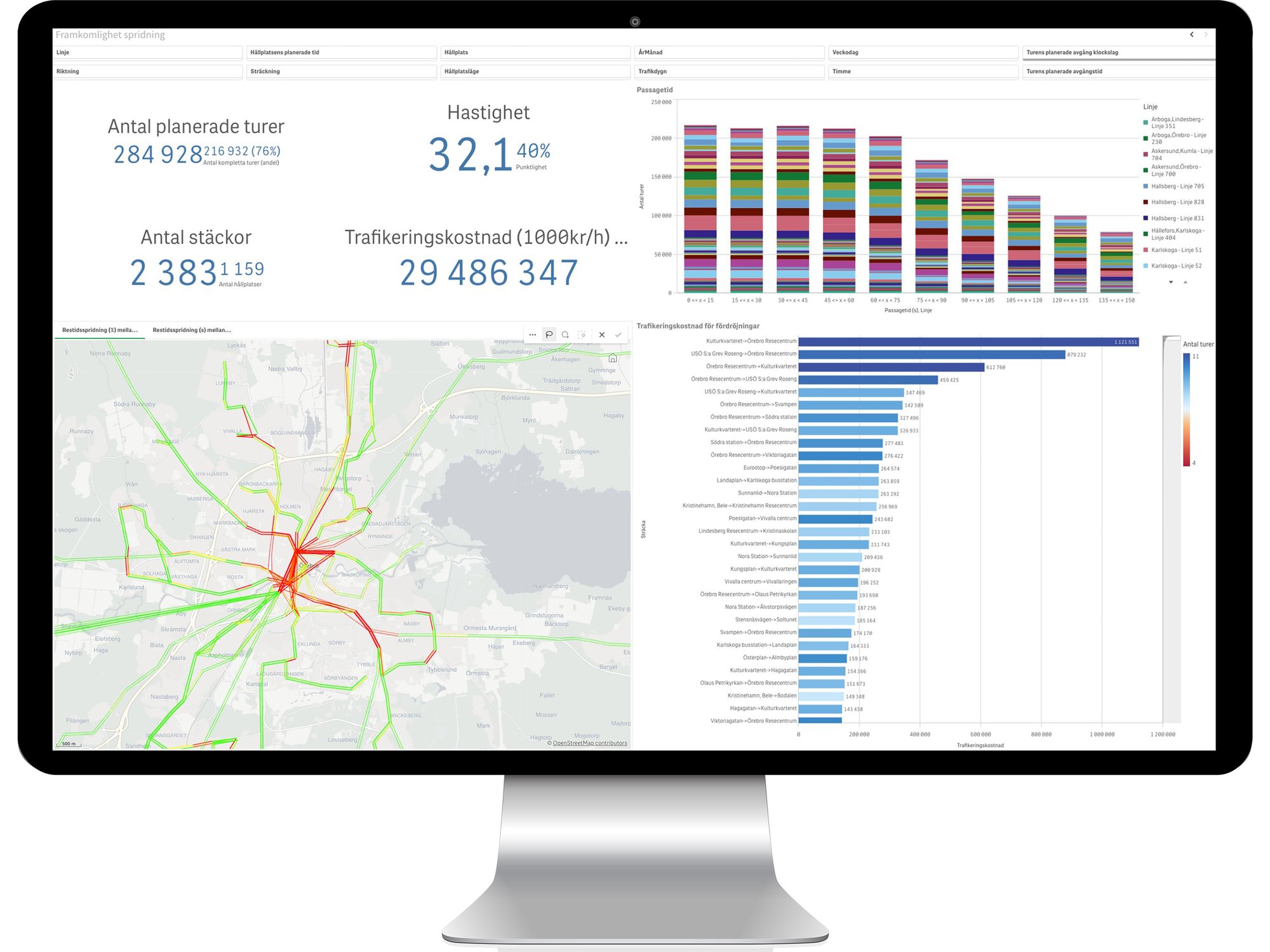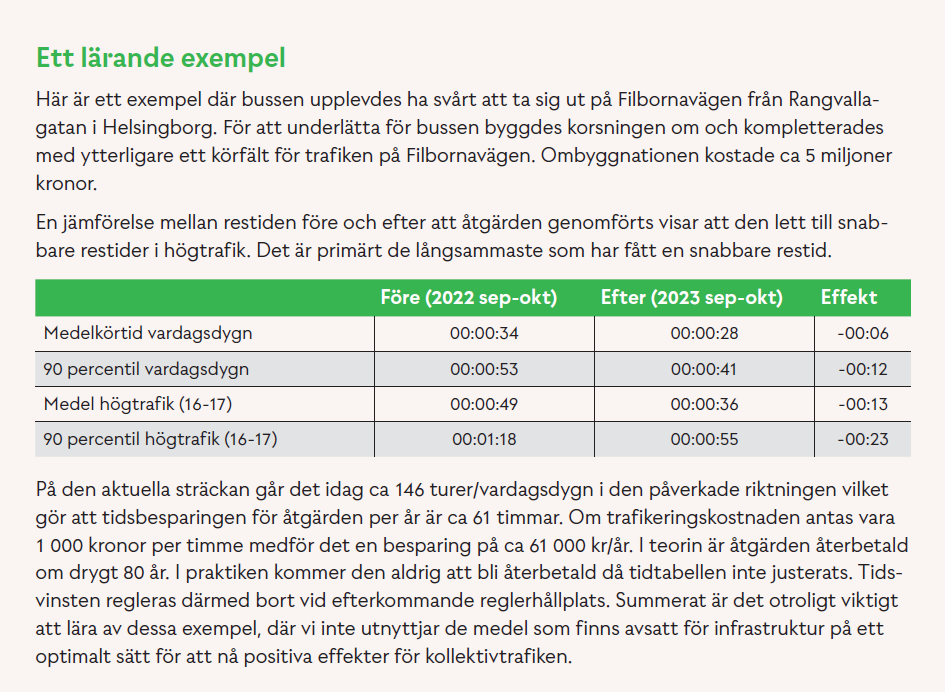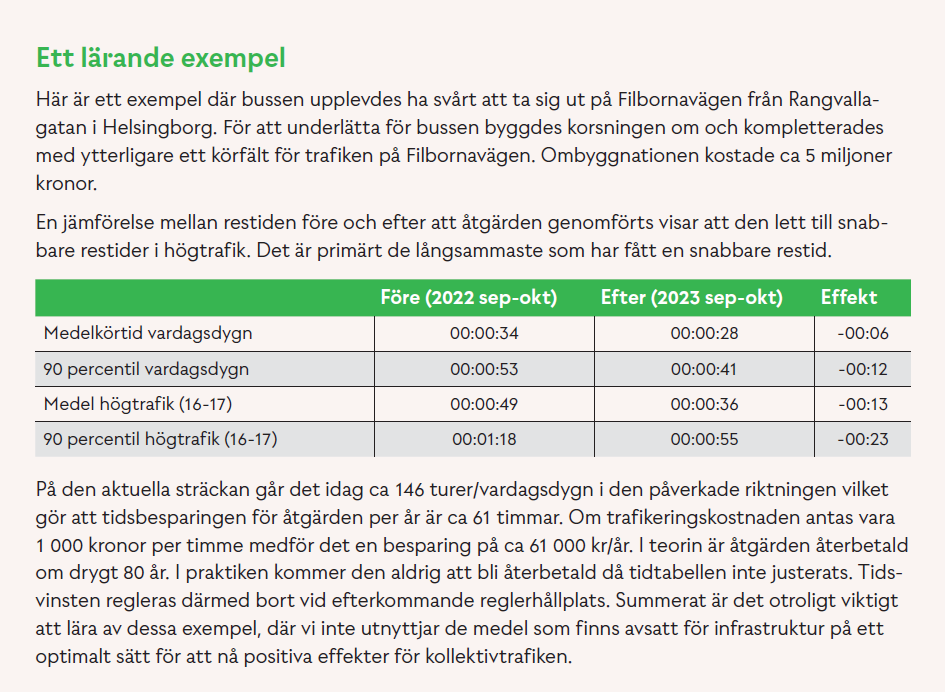Nobina's 2023 Accessibility Report
In a world where time is of the essence, public transport faces the challenge of being not just a means of transportation, but an efficient, reliable, and sustainable solution for all. The latest study from Nobina's 2023 Accessibility Report reveals fascinating insights into the potential and power of optimized accessibility in Swedish public transport.
From financial gains to advances in sustainability, the report highlights how strategic improvements can transform public transport into a more attractive and efficient service for millions of people. These insights show the power of data-driven public transport planning and how we can create a smoother, faster and greener future for all. Read on to discover seven groundbreaking insights from this transformative study and discover how together we can shape the future of public transport.
We've selected 7 insights from Nobina's accessibility report that we find interesting.
1. Economic potential through improvements
The accessibility report highlights that improved accessibility can reduce traffic costs for Swedish public transport by SEK 509 million per year. If accessibility deteriorates, these costs risk increasing by SEK 667 million per year. By improving accessibility and shortening travel times, traffic costs can be reduced and ticket revenue increased by a total of SEK 800 million each year. If the negative trend continues and travel times become longer, costs could increase and revenues decrease by a total of over SEK 1 billion. This underlines the economic potential of investing in measures that improve the accessibility of public transport.
2. The importance of data-driven decisions
The accessibility report emphasizes that data-driven decisions are fundamental to achieving effective accessibility measures. By using data and facts as the basis for decisions, rather than subjective perceptions, more accurate and cost-effective measures can be identified. It highlights that a data-driven approach enables the right measures to be implemented where they are really needed, maximizing the impact of every dollar invested. The report also underlines the importance of evaluating the potential of each measure before it is implemented, continuously monitoring and evaluating the impact of implemented measures, and optimizing timetables to improve punctuality and reduce travel times.
Data and analysis are based on Flowmapper Analytics
3. High-impact improvement actions
The report discusses various measures that have proven to be effective in improving the accessibility of public transport. Some of these include adjusting timetables, removing stops with low passenger numbers or short distances to the next stop, and introducing all-door boarding and disembarking. These measures contribute to faster travel times and higher punctuality.
- Adjusting timetables: Carefully reviewing and adjusting timetables to actual travel times can bring significant improvements in travel time and punctuality. This is a cost-effective measure that can lead to significant time savings over a year.
- Removing stops: Reducing the number of stops, especially those that are close together or have few passengers, can make travel times shorter and more predictable. This has been tested on some routes and has shown clear improvements in accessibility.
- All-door boarding and disembarking: Allowing passengers to board and disembark at all doors can reduce the time the bus spends at stops and thus improve overall travel time.
These measures underline the importance of optimizing the public transport system, focusing on details that may seem minor, but have a major impact on the efficiency and attractiveness of public transport.
4. Accessibility deficiencies and their effects
The accessibility report highlights that increased accessibility deficiencies create a negative spiral where longer travel times require more vehicles to maintain the service, leading to higher operating costs and fewer departures. This results in fewer passengers and increased car use, further worsening accessibility. Accessibility constraints may be due to physical barriers that reduce the speed of all vehicles, or to traffic-related barriers that give rise to travel time variation. It points out that although not all journeys are affected by specific obstacles, the fastest journeys often have to wait for the slowest, which affects punctuality. The report illustrates this with examples of how physical barriers and traffic-related accessibility deficiencies affect travel times, underlining the need for measures to improve accessibility and reduce these negative effects.
5. Regional differences and challenges
The document notes that there are clear regional differences in the potential for improvements in public transport accessibility. The greatest potential for improvement and deterioration is in the largest regional public transport authorities, which operate the most services. This means that larger cities and regions, that handle high volumes of public transport, have the greatest potential to influence accessibility through effective measures. These regional differences underline the importance of tailor-made solutions that take into account the unique challenges and conditions of each region. Focusing on the regions with the highest traffic volumes can lead to significant improvements in accessibility for public transport as a whole.
6. Framkomlighetens påverkan på hållbarhet och klimatmål
The document highlights that improved public transport accessibility leads to shorter travel times, which in turn can increase the number of public transport trips by over 18 million per year. This is equivalent to the size of half of Malmö's urban traffic. The increased travel resulting from improved accessibility represents significant climate investments through reduced CO2 emissions, as well as helping to reduce noise and particle problems in the urban environment. This insight underlines that investments in public transport accessibility not only improve the service for users but also play an important role in working towards more sustainable cities and achieving climate goals.
7. Successful case studies
The document highlights that improved public transport accessibility leads to shorter travel times, which in turn can increase the number of public transport trips by over 18 million per year. This is equivalent to the size of half of Malmö's urban traffic. The increased travel resulting from improved accessibility represents significant climate investments through reduced CO2 emissions, as well as helping to reduce noise and particle problems in the urban environment. This insight underlines that investments in public transport accessibility not only improve the service for users but also play an important role in working towards more sustainable cities and achieving climate goals.


.png)

